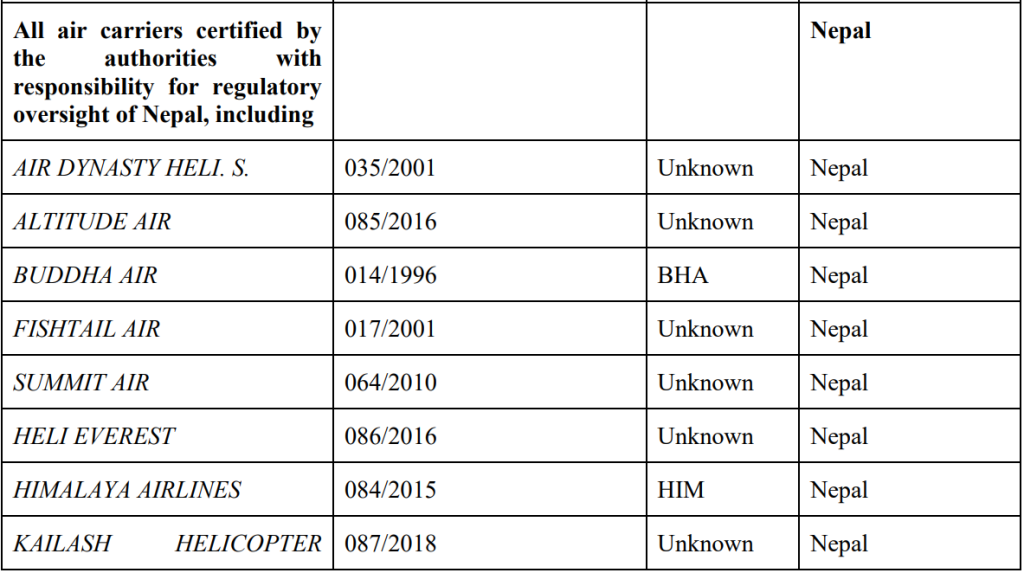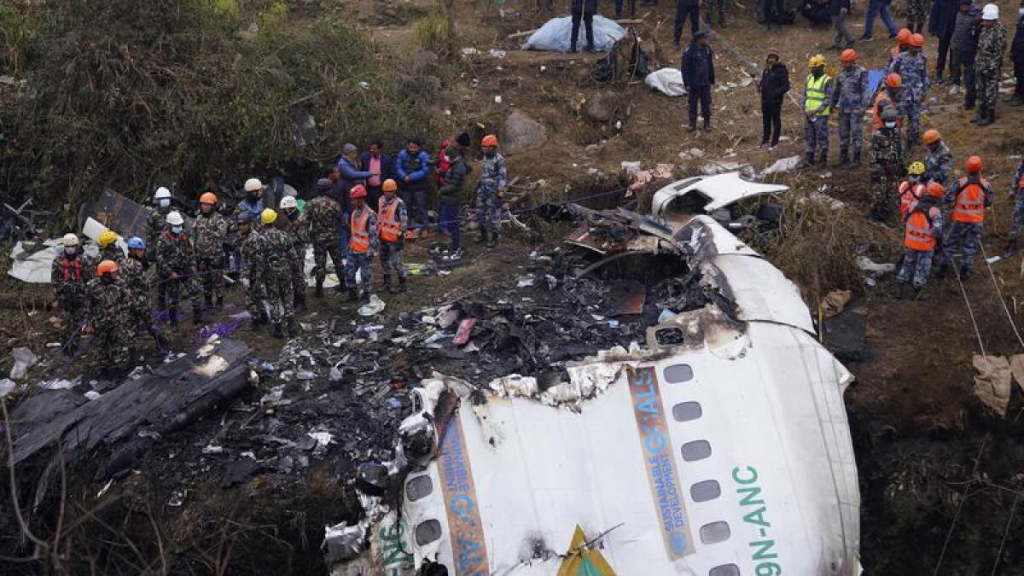The Incident: A Day of Mourning for Nepal
The ill-fated flight, operated by Saurya Airlines, was en route to Pokhara, a major tourist destination in Nepal. The aircraft, carrying 19 people, including 17 technicians and two crew members, slipped off the runway under unclear circumstances. The crash led to a fierce blaze, with dramatic footage capturing the exact moment the plane was engulfed in flames.
Police spokesman Dan Bahadur Karki confirmed that 18 people perished in the accident, with the sole survivor being the pilot, Captain MR Shakya. Captain Shakya was promptly rushed to Kathmandu Medical College Hospital, where he is currently receiving treatment for his injuries.
Eyewitness Accounts and Immediate Aftermath
Eyewitnesses reported that the aircraft flipped during takeoff, with its wing tip striking the ground before it plummeted into a gorge. Thick plumes of smoke were seen billowing from the wreckage site between Buddha Air’s hangar and the radar station at the eastern end of the runway.
Emergency responders, including police and firefighters, swiftly arrived at the scene, battling the blaze and conducting rescue operations. Despite their efforts, 18 bodies were recovered from the crash site, leaving a nation in mourning.
Challenges in Nepal’s Aviation Sector
Nepal’s aviation industry has long faced scrutiny due to safety concerns, inadequate training, and maintenance issues. The European Union has banned all Nepali carriers from its airspace, highlighting the need for stringent safety measures.


Nepal’s challenging geography, characterized by high-altitude runways surrounded by mountainous terrain, poses significant risks even for experienced pilots. Additionally, the region’s unpredictable weather further complicates aviation safety.
Historical Context: A Grim Record
This tragic incident is a stark reminder of Nepal’s troubled aviation history. In January 2023, a Yeti Airlines plane crashed while landing in Pokhara, killing all 72 people on board. The incident was attributed to pilot error, as they mistakenly cut the power during the descent.

Similarly, in 1992, a Pakistan International Airlines flight crashed on approach to Kathmandu, resulting in 167 fatalities. In the same year, a Thai Airways flight also crashed near Kathmandu, claiming 113 lives. These incidents underscore the persistent safety challenges faced by Nepal’s aviation sector.
Calls for Changes
Saurya Airlines operates Bombardier CRJ 200 jets exclusively on domestic routes. The airline has been urged to conduct thorough investigations and implement robust safety protocols to prevent such incidents in the future.
Moving Forward: Ensuring Aviation Safety in Nepal
As Nepal grapples with this devastating loss, there is a renewed focus on improving aviation safety standards. Enhanced training programs for pilots, stringent maintenance checks, and updated safety protocols are imperative to prevent future tragedies.
The Nepali authorities must collaborate with international aviation experts to overhaul the existing safety framework and restore confidence in the country’s aviation sector.
The plane crash at Tribhuvan International Airport is a somber reminder of the inherent risks associated with aviation, especially in a country with challenging terrain and weather conditions like Nepal. As the nation mourns the loss of 18 lives, it is crucial to prioritize safety and implement comprehensive measures to ensure such tragedies do not recur.


